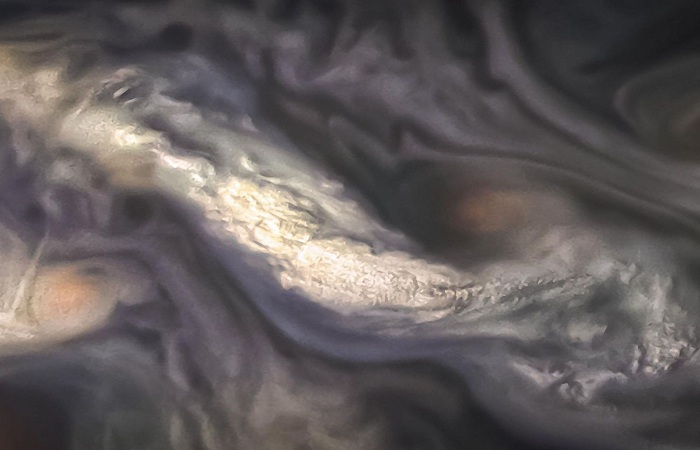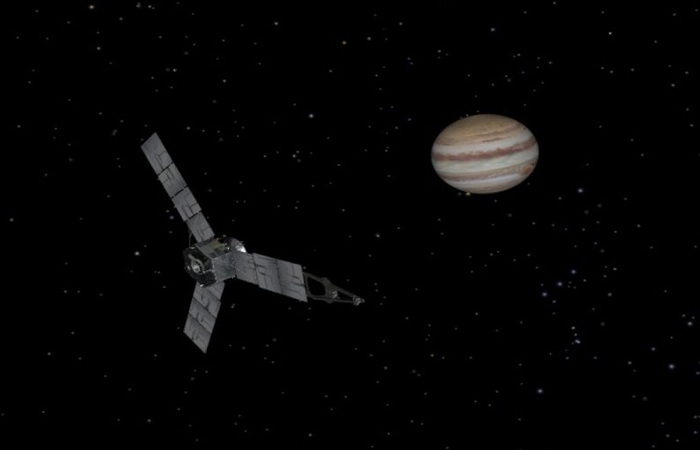
The gas giant Jupiter's famous bands of cloud have been observed by astronomers for more than 100 years, but until now scientists have not been sure how accurately they reflect what was happening deep inside the planet.
Now, a number-crunching study into how magnetic fields affect atmospheric flows has revealed that at their possible deepest, they never dive more than 3% into the planet itself.
Powerful jet streams flow east through the Jupiter's atmosphere - jet streams which last year NASA established move similar to Earth's.
Spectral analysis of the light reflecting from Jupiter has shown the bands are made of clouds of ammonia in the outer atmosphere, giving the planet its striking stripes of white, red, orange, brown and yellow.
Observations by researchers in Australia and the United States have now helped develop a picture of what's happening beneath these clouds.

Dr Navid Constantinou, from Australia's ANU research school of earth sciences, said: "We know a lot about the jet streams in Earth's atmosphere and the key role they play in the weather and climate, but we still have a lot to learn about Jupiter's atmosphere.
"Scientists have long debated how deep the jet streams reach beneath the surfaces of Jupiter and other gas giants, and why they do not appear in the sun's interior."
Evidence recently produced by NASA's spacecraft Juno, which conducted multiple fly-bys of the gas giant, suggested the jet streams reached up to 1,860 miles (3,000km) below Jupiter's clouds.
Another member of the research team, Dr Jeffrey Parker from Livermore National Laboratory in the US, said their theory showed how the jet streams were suppressed by the planet's magnetic field.
"The gas in the interior of Jupiter is magnetised, so we think our new theory explains why the jet streams go as deep as they do under the gas giant's surface but don't go any deeper," said Dr Parker.

The team compared their observations of Jupiter's bands with the ways that our own planet's atmosphere works.
"Earth's jet streams have a huge impact on the weather and climate by acting as a barrier and making it harder for air on either side of them to exchange properties such as heat, moisture and carbon," said Dr Constantinou.
Unlike the jet streams on Earth, which are wavy and irregular, those on Jupiter are relatively straight compared to its axis.
"There are no continents and mountains below Jupiter's atmosphere to obstruct the path of the jet streams," Dr Parker said.
from Science & Technology - SUCH TV - SUCH TV

